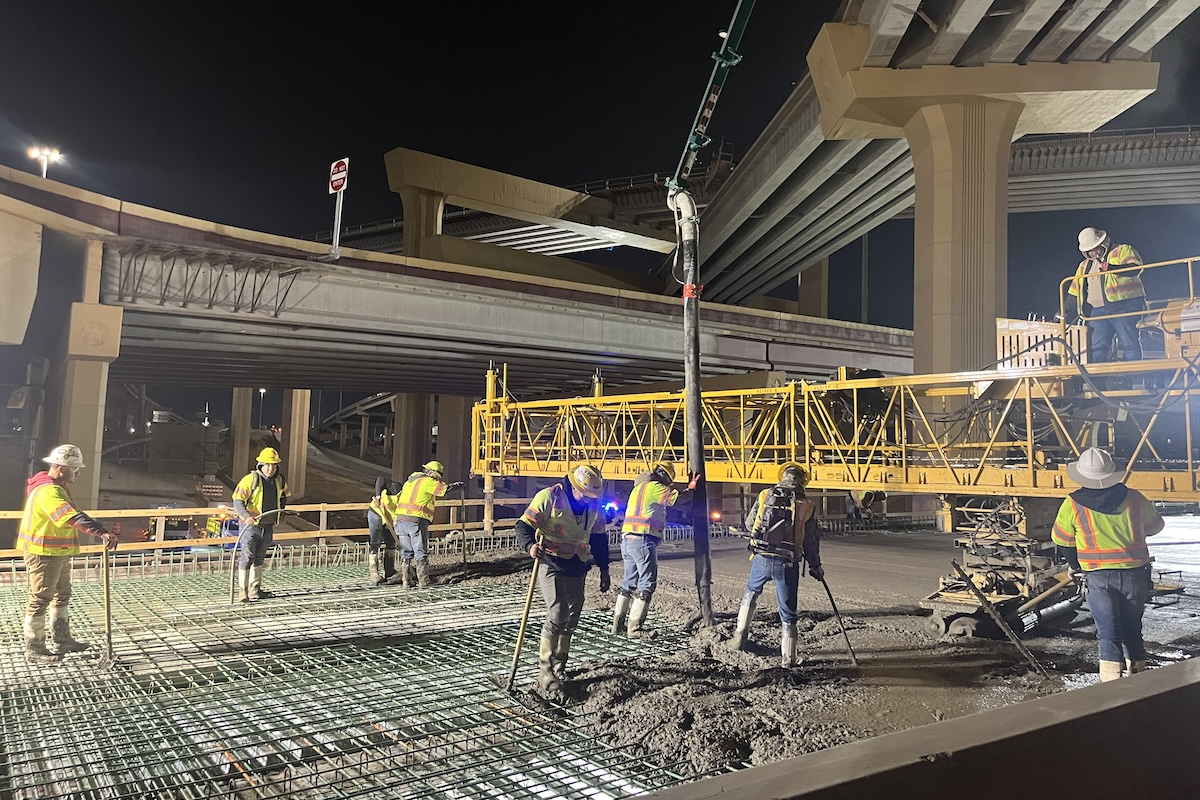Performing large-diameter bores on-target and on-grade is challenging in normal soil conditions, but concerns about bore path deviation increase substantially in rocky soils where the material density isn’t consistent. Those conditions are precisely what the S.J. Louis auger bore and tunneling team faced on a recent sewer replacement project just outside of Cincinnati, Ohio, in Elsmere, Kentucky.
According to S.J. Louis Senior Project Manager/General Manager Bob Schueller, the company has specialized at performing large-sized utility work since 1983. “Our primary focus is open-cut installation work, but we also perform a lot of tunneling, guided auger boring and microtunneling work,” explained Schueller. “We’ve performed tunneling work up to 132 inches in diameter and completed auger bores in varying ground conditions across the nation. Our skilled tunneling and auger boring team compliments our open-cut organization, in addition to our sister company, Atlas Trenchless, which performs large-diameter horizontal directional drilling work. We have always believed in developing and investing in highly skilled personnel that helps us become more efficient so we can stay competitive in our bids nationwide.”
Keyes; Karl Holthaus, S.J. Louis’ Equipment Manager; and Wayne Brown, Tunneling General Superintendent got together to determine the most efficient way to deal with the varying rock formations and came up with a solution.
“At first, we thought we would just use an auger boring machine with a traditional rock disc cutting head,” said Holthaus. “The particular head we had in mind was something we’ve used before, and while we knew it would be able to cut through the rock, the methods to steer and maintain line and grade would have been time-consuming. Using that head would require pulling augers out of the casing frequently to make adjustments. We needed to find a more efficient and less tedious way to complete the project.”

| Your local LeeBoy dealer |
|---|
| Closner Equipment Co Inc |
| Romco Equipment Co |
| ASCO Equipment |
| Bee Equipment Sales Ltd |
The team decided to take a trip to Greenville, South Carolina, to check out a new rock steering system that McLaughlin Group, Inc. recently introduced. “We have often used the McLaughlin On-Target steering system in softer soils and have had a lot of success with this product,” said Brown. “The system we were checking out on that day was similar but designed specifically for rock – it was exactly what we were looking for.”
After weighing their options, the auger boring team decided to use a 72-inch auger boring machine paired with the McLaughlin steerable rock system (SRS), which included a 36-inch steerable head and a self-contained control station that gave them the ability to make remote steering adjustments and provide lubrication. “The SRS was a larger upfront investment compared to any alternative options we had discussed, but the potential time we could save in labor and the amount of times the crew would have to handle the augers more than made up for that,” said Holthaus.
“Steering a steel casing through limestone is hard, but a mixture of shale and limestone with varying densities proved to be even more challenging,” said Keyes. “The shale sat above the limestone, so the casing wanted to follow the path of least resistance, which meant we had to pay extra attention to our line and grade and make minor steering adjustments with the steering windows on the McLaughlin head to keep tracking where we wanted it. Rather than having to pull augers after every section of casing we bored, we would monitor the LED lights on the head and the control station’s water level to ensure we were on target right to left and vertically.”
Overall, the team said the first bore went smoothly for never having used the SRS before. The crew did not have to pull the augers to check line and grade for the duration of the bore, Due to the length of the bore, the crew had to pull the augers one time because of an issue with an auger connection bolt from the torque created from the long length of the bore. Even with that unexpected issue, the crew managed to achieve daily productions up to and in excess of 40 feet per day.
“I think it was in the middle of that second bore that I realized this system was the best auger boring accessory that I’ve used in my 25 years of doing this kind of work,” explained Keyes. “It’s not just the production rates either. As those augers work their way through the ground, the rock can leave the metal edges on the auger jagged. The ability to do a whole bore in one pass helps reduce the repetitive task of pulling augers and inserting them back into the casing.”

| Your local JCB North America dealer |
|---|
| BOSS JCB |
| South Star JCB/Meinecke |
| Monk JCB |
| ASCO Equipment |
Another reason Keyes was impressed with this method of boring in rock is that the crew always knew where they were. “On long bores steering is a big deal, because if small adjustments aren’t made properly early on in a bore, it can lead to a bore being significantly off course near the end. With the McLaughlin SRS, feedback is instant and I was confident that we were on line and on grade the whole time.”
“We’ve always said investing in quality equipment will help our crews be more efficient on the job and help grow our business long term,” said Schueller. “The SRS system has proven to be a great addition to our fleet and one we’ll use on many future projects.”









































































